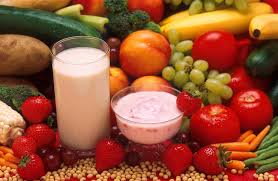
FOODS TO AVOID
These foods should be limited as much as possible. Some are just empty calories while others may be destroying the protective enamel on your child’s teeth.
- Citrus Fruits: Because of high acidic levels in oranges, lemons, limes and grapefruits, these foods should be avoided because this acid can wear away essential tooth enamel. If these are something that your child really loves, incorporate them with larger meals where the acid will be less prominent when combined with other foods.
- White Grains: Sandwiches made with white bread or crackers made from white flour are not a good choice. Foods made from white flour are refined carbohydrates that turn to sugar. As you know, sugar is not only bad for the waistline, but also doesn’t promote strong, decay-free teeth. The converted sugar feeds the bacteria and gets lodged between teeth.
- Dried Fruit: Simply said, dried fruits are sticky. Parents may think that fruit-snacks are a good choice because of the “fruit” but not so. They also contain a lot of sugar. Just imagine how this sticky, sugary dried fruit gets stuck between teeth and take a very long time to dislodge. The only time that we would OK dried fruit as part of a school lunch is if the child brushes AND flosses after their lunch period.
- Hard or Sticky Candy: Lollipops, Jolly Ranchers, caramels—not a good idea. As stated above about the dried fruit, hard or sticky candy also turns to liquid sugar. Hard candy dissolves slowly, bathing the teeth in sugar. This gives bacteria more time to produce acid, which destroys tooth enamel. Another negative side effect of hard candy is the chance of chipped or broken teeth. Haven’t you been tempted to “chomp” on a piece of hard candy? That’s a chipped tooth waiting to happen.
- Chips: As with white bread and white crackers, the starch in potato chips turns to sugar. Chips also have a tendency to get stuck between the teeth. So jammed between the teeth, you have starch rapidly turning to sugar, which promotes tooth decay.
- Cakes, pies, cookies: These may be yummy, but they are full of sugar and white flour. As stated above, the carbs turn to sugar, which promotes the growth of bacteria.
- Soda: Sodas are very acidic. Even sugar-free, diet sodas contain acidic acid and phosphoric acid which erodes tooth enamel because of plaque build-up. Caffeinated sodas also hinder saliva production and creates dry mouth. Saliva helps wash away some of the acid, but the caffeine in the sodas decreases this natural rinse.
- Sports and Energy Drinks: If you look at the ingredients list on most sports or energy drinks, sugar is in the top two–usually number one! These have absolutely NO nutritional value and so much liquid sugar that just soaks the teeth in this damaging sugar. In 2008, the University of Iowa conducted a study where they soaked teeth for 25 hours in several different drinks. They wanted to see the effect of the sugary sports drinks on the wear of the tooth enamel. Lemon-Lime Gatorade, Red Bull, Coke and Diet Coke were the worst offenders. Also, the American Academy of Pediatrics said that these drinks are not necessary to promote good health and hydration after prolonged, vigorous activity. Water is the best option.
FOODS TO PACK
These foods are not only nutritiously healthy for your kids, but also promote excellent dental health.
- Milk and Cheese: We all know that calcium builds strong bones, including the jaw bone, but the calcium AND phosphorus in dairy products (especially milk and cheese) also help your tooth’s enamel. If the tooth enamel is already damaged, the casein (type of protein found in milk and cheese) has shown to help repair the damaged enamel.
- Nuts: Nuts are a plant-based protein that contains magnesium, potassium, phosphorus, zinc and calcium. All of these minerals are good for dental health. Try almonds, unhulled sesame seeds or Brazil nuts.
- Certain Fruits and Veggies: Water helps dilute sugars found in foods and also increases saliva production. Apples, pears and celery contain a lot of water to aid in the process. Strawberries, mangoes and grapes are full of vitamin C, which helps with gum health. Strawberries contain malic acid (natural teeth whitener) and only 1/2 cup gives you 70% of your daily requirement of Vitamin C.
- Leafy Greens: Spinach, kale and other leafy green vegetables are not only full of important nutrients but they also require chewing. Chewing helps produce more saliva, which helps wash away bacteria.
- Water: Drinking water is so important for a healthy mouth and body. Water washes away food particles and keeps saliva flowing. The saliva in your mouth contains minerals and proteins that work at eliminating acid. Keep hydrated with water because your saliva is 95% water.
- Sugarless Gum: This is not a food, but chewing sugarless gum after meals promotes saliva production. This washes away bacteria. Sugarless gum is often sweetened with xylitol, which reduces bacteria in the mouth. Just be sure to choose flavors like mint as opposed to fruit flavors, which are more acidic.
THREE FUN IDEAS FOR THE LUNCH BOX
- Almond butter spread between two apple rings. Cut the apple so rings are formed and spread with your favorite nut butter. You can even sprinkle with cinnamon.
- Fruit Kabobs: Place “mouth healthy” fruit on a skewer, along with calcium-rich cheese cubes. Try apple chunks, pears, strawberries and grapes.
- Whole wheat pitas filled with hummus, shredded carrots and a few spinach leaves.
